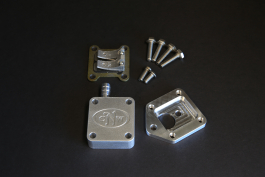Update on further work on my '73 Hi-Rider: Have installed a new fuel line assembly from tank petcocks to carbs, new oil supply line assembly from sump to rocker/tappets in the head, and was able to patch the leak on my fiberglass tank. I know everybody says to replace the tank because of possible interior degradation if ethanol fuel was used, but the tank was dry when I got it and I can't verify if it has or hasn't seen ethanol fuel. Will use non-ethanol fuel and see what happens at least for the short term. Installed two new correct plugs. Used the "ticklers", no choke, and the engine started after several kicks. Started and ran and was able to adjust the idle down to about 1.000 rpm and it sat there and idled at that speed. Let it set there and idle long enough to get it up to temp (guessing) 4-5 minutes while running a fan in front of the bike. Although it doesn't seem to be actually leaking oil, it seems to have a slight seepage somwhere because while running, it seems to be burning off oil and giving a hint of smoke. It's not smoking out of the exhaust, but as I say, more like it's burning off an external seepage of oil. Doesn't look like it's coming out of the tappet covers. Now have to ask, was head gasket failure an issue on these bikes, and by that I mean any more so than any other bikes? I'll have to start it again and investigate further, but it looks like it may be seeping at the head gasket. Hope not. Seems I read a post here on the forum that the composite head gaskets needed to be retorqued several times after being installed. I really have no reason to believe this engine has ever been apart. Doesn't appear to have been, can't say for sure.
Last edited:



